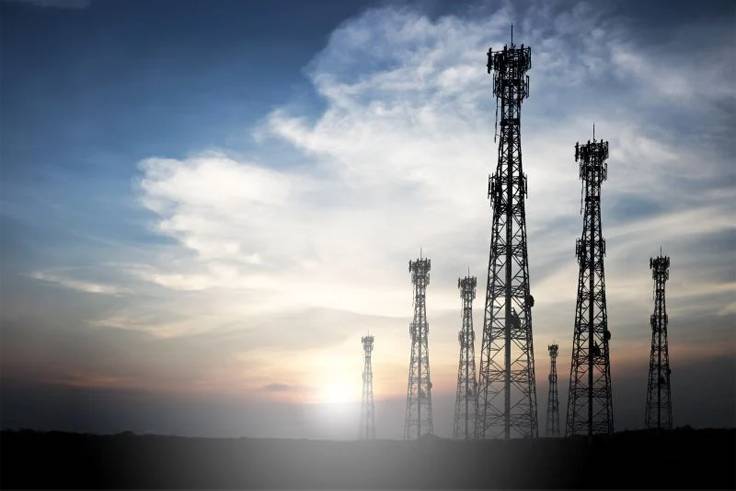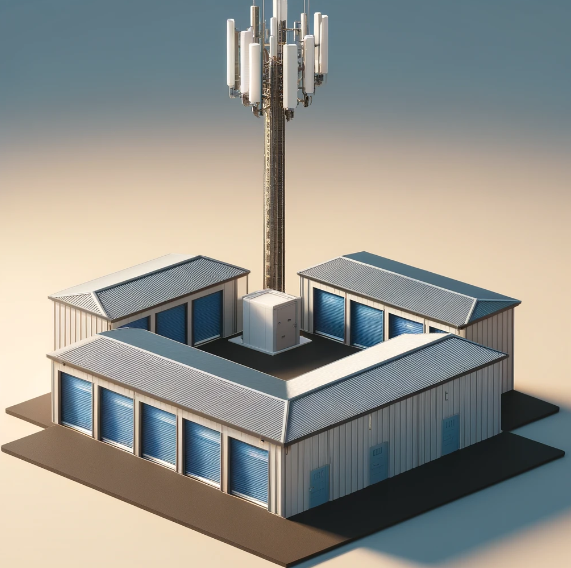Broadcast Tower Lease: Rates, Negotiations, Agreements

Broadcast Towers
Broadcast towers provide mounting space for broadcast equipment including FM radio, AM radio, and Television (TV) antennas. These antennas can be massive, weighing anywhere from 1,000 pounds to 15 tons per antenna.
Most broadcast towers are guyed towers with three or more guy wires attached to grounded anchors. Broadcast towers can take up a great deal of ground space (up to 300 acres) which is why they are typically found in rural areas or on mountaintops where natural elevation provides the best location for transmitting a signal across a wider viewing or listening market.
The tallest broadcast towers in the United States exceed 2,000’ tall.
Contact Us
TYPES OF BROADCAST TOWERS
TV Broadcast Towers
These towers are typically the tallest of all towers. TV broadcasters use the towers to provide over-the-air (OTA) signal as part of their FCC mandate to provide free service to those with in-home antennas. TV towers can cover areas that exceed 50 miles in radius from the tower location. These towers are normally guyed towers due to the heavy loading and height that is required to broadcast over this distance.
FM Radio Towers
FM radio antennas are sometimes “collocated” on larger TV broadcast towers, although there are standalone FM radio towers too.
Low Power FM (LPFM) Towers
In 2000, the FCC created the low power FM radio service and started making spectrum available to noncommercial educational entities and public safety information entities for low power FM (less than 100 watts) transmission. Most LPFM leases that we see are from religious stations that are expanding the reach of their services over LPFM.
AM Radio Towers
Unlike FM or TV towers, AM radio towers operate at lower frequencies and the tower itself acts as the transmitter. AM Towers are referred to as “hot” because of the tower has current running through it. AM radio towers may be constructed in a phased AM array where multiple towers are placed near each other and connected. The entire “array” acts as the transmitter.
BROADCAST TOWER LEASE RATES
Broadcasters sometimes own the property under their towers. However, in most cases, they have a broadcast tower lease with the property owner. (In rare cases, they may also enter a long-term easement).
More than any other tower lease type, broadcast tower leases rates range widely. There are several factors that influence the broadcast tower lease rate. In the United States, we have observed broadcast tower lease rates as cheap as $100/year and as expensive as $300,000 per year. Why such a broad range?
- Since many broadcast towers are in rural areas, the underlying land is worth less.
- Many broadcast towers were built decades ago, and the leases are long leases.
- Broadcast towers can take up many acres for the largest towers with their guy wires that stretch 1,500’ from the tower.
- Broadcasters tend to build towers in similar areas. Partially this is because the FAA is more willing to approve the height of a tall tower if it is near other tall towers.
- Moreso than with cell tower leases, landowners have even less information about broadcast tower lease rates. In other words, landowner ignorance can cause landowners to undervalue their leases.
- For larger more populated markets (like some in the Northeast), it can be very difficult to find a sizeable enough parcel to build a new broadcast tower.
Put another way, each broadcast tower lease is unique and reflects the specific conditions for that particular broadcaster at the time they erected the tower.
NEGOTIATING BROADCAST TOWER LEASES
Negotiating broadcast tower leases is a bit more challenging than negotiating cell tower leases, and because they aren’t as common, comparable lease rates data isn’t as easy to gather. In addition, broadcast tower lease valuation can be more complex than normal cell tower valuation because while the broadcaster may have more latitude in the geographic area in which they can place the tower initially, there are also strict regulations where broadcasters are allowed to place large towers like those needed to fully propagate signal.
These include:
- FAA regulations regarding air safety limit where tall towers may be erected.
- Local zoning regulations which may further limit where tall towers may be erected.
- FCC regulations regarding licensing and spacing between stations that may limit the broadcaster’s authorized power or mounting height which then impacts the market viability and profitability of the station.
For existing broadcast tower leases, there is often an excellent opportunity to negotiate more aggressively at the expiration of the lease. Broadcast tower facilities can cost upwards of $10,000,000 to construct and broadcasters rarely are willing to move the station/tower. However, the broadcast business has seen better days as advertising revenue has transferred from AM, FM, and TV broadcasting to Google and social media. So, broadcasters may not be in the same financial position to negotiate a high lease rate as they might once have been.
HOW STEEL IN THE AIR CAN HELP
It is precisely because of these complexities that property owners turn to Steel in the Air. The experts at Steel in the Air can assist with evaluating broadcast tower lease proposals to determine a best-case scenario that protects landowners’ interests. It is what we do best. We have partnered with noted TV and FM engineers to evaluate many proposed leases for broadcast towers or the expiration of an existing broadcast tower lease.
If a television or radio station has contacted you about placing a broadcast tower on your property or an antenna on your mountaintop, or about extending their existing broadcast tower lease, please contact us immediately.










